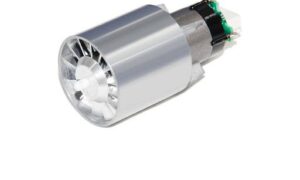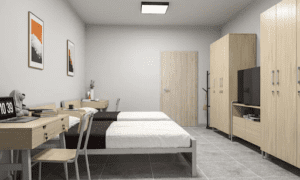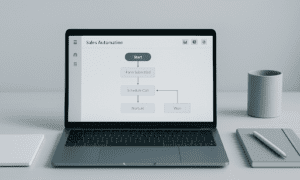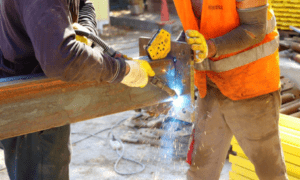Event photography is not just about taking pictures. It is about showing what your business event is really about. This can be a conference, a corporate meeting, or a product launch. Using good photography can really help, as it can tell your brand’s story, connect with your audience, and also help your marketing.
But how do you ensure that your event photography hits the mark? How do you choose the right event photographer or videographer? And what strategies can you use to capture your event in the best light?
This guide is here to help. It’s designed to provide business owners with key insights and actionable tips on event photography. From defining your photography goals to selecting the right equipment, we’ve got you covered!
Understanding the Importance of Event Photography for Your Brand
Event photography is a powerful tool for branding. It captures the moments and essence of your event, creating a visual narrative of your brand. Photographs can showcase your brand’s personality and culture, making a lasting impression on attendees and viewers alike.
High-quality event photos serve as effective marketing materials. They can be used across various platforms, from social media to print advertisements. Sharing these images with your audience can increase engagement and widen your reach. Photos breathe life into your promotional campaigns, turning them into compelling visual stories.
Brand consistency is crucial, and event photography plays a significant role here. By incorporating brand elements like logos and colors in your photos, you maintain a cohesive brand image. Event photos that align with your brand message will leave a strong, memorable impact.
Additionally, capturing the right event moments can highlight your company’s dedication to excellence. It reflects how well you orchestrate successful events, enhancing your reputation. In the long run, quality event photography helps build trust and loyalty among your audience. It shows professionalism and attention to detail, two key factors that strengthen brand credibility.
Defining Your Event Photography Goals
Before your event, clarify what you want from your event photography. Start by identifying your objectives. Are you aiming to create visuals for marketing, or is it more about documenting the event’s atmosphere?
Next, consider the key moments you want to capture. This could include candid interactions, speeches, or specific attendees. Define what elements are crucial for telling the event’s story effectively.
Finally, match your goals to your brand’s overall strategy. Ensure that the photography style complements your brand identity. This alignment will aid in producing photos that support your long-term branding goals, ensuring your event is impactful and memorable.
The Benefits of Hiring a Professional Event Photographer or Videographer
Hiring a professional conference photographer or videographer can greatly enhance your event’s success. They bring experience and expertise that are hard to replicate. Their skills in capturing the right moments ensure high-quality images that align with your brand’s needs.
Professionals know how to handle various conditions and unexpected challenges. They can adapt quickly to lighting changes or crowd dynamics. This adaptability is crucial, especially for events that require attention to detail and timing, like conferences or product launches.
Moreover, a professional photographer or videographer contributes to the branding and marketing of your event. They can capture iconic moments that resonate with your audience. These visuals can then be used in promotional materials, enhancing your event’s reach and impact.
Creating a Detailed Photography Brief
A well-crafted photography brief is critical for ensuring your photographer aligns with your vision. It serves as a roadmap, outlining your expectations clearly.
Start by detailing the goals and objectives of the event. Explain what kind of atmosphere and moments you want to capture. Clarifying these points helps the photographer understand the type of content you value most.
Include specific elements in your photography brief:
- Event schedule and timeline
- Key moments or highlights to capture
- List of VIPs or speakers
- Branding elements to include
- Desired style and mood for the photos
Lastly, address any logistical details like venue layout or particular shots you require. Sharing this information in advance avoids last-minute confusion. Thus, a comprehensive brief is indispensable for successful event photography.
Candid vs. Posed Shots: Knowing When to Use Each
Understanding when to use candid versus posed shots can elevate your event photography. Each style serves different purposes and captures unique aspects of an event. Balancing these approaches will ensure a diverse and engaging photo collection.
Candid shots are ideal for capturing spontaneous, genuine moments. They reflect the true emotions and interactions of attendees. Such photos are particularly effective at informal gatherings, showcasing the event’s lively atmosphere without interruption.
Posed shots, on the other hand, are planned and structured. They work well for formal settings like corporate events or award ceremonies. These shots allow control over composition, light, and the subjects’ expressions, ensuring polished and professional results.
The key is to use candid and posed shots strategically throughout your event. By identifying situations suitable for each, you’ll create a rich narrative. This blend allows you to both preserve authenticity and highlight important moments.
Storytelling Through Event Photography
Event photography isn’t just about capturing moments; it’s about telling a story. Your photos should communicate the essence and flow of the event, much like a narrative. This approach draws viewers in and helps them connect with the event’s purpose and atmosphere.
To weave a compelling story, focus on key elements that define the event. Capture the buildup of excitement, the climax of activities, and the quiet moments in between. These diverse shots are the building blocks of your narrative, each adding depth and context to the overall story.
Attention to detail is crucial in storytelling. Consider how lighting, composition, and angles can convey the mood. Highlight the subtle interactions and emotions of participants. By doing so, you create a visual tale that resonates with audiences long after the event ends, making your photography meaningful and memorable.
Capturing Key Moments: The Heart of Event Photography
Capturing key moments is at the heart of event photography. These are the instances that define the event’s essence. To not miss these moments, prepare a shot list based on the event schedule.
Being attentive and observant helps immensely. Stay ready to anticipate when memorable interactions or highlights are about to occur. Your readiness allows you to capture genuine emotions and reactions.
These photos should tell a story. Include a mix of wide-angle shots to convey the event’s scale, and close-ups to capture emotions. By focusing on key moments, you not only document the event but create a narrative that resonates with viewers well after the event concludes.
Leveraging Social Media for Real-time Event Coverage
Social media has transformed event photography. It allows immediate sharing of event highlights, amplifying the event’s reach. Capturing and posting photos during the event enhances engagement and buzz.
Real-time coverage is strategic. Identify moments that are share-worthy, such as keynote speakers and crowd reactions. Use platforms like Instagram and Twitter to provide updates and engage attendees.
Using hashtags specific to your event can increase visibility. Encourage attendees to share their photos using the event hashtag. This not only broadens your content’s reach but also builds a community around the event. Real-time social media engagement can significantly enhance the overall event experience, making it memorable and widely recognized.
Communicating Effectively with Your Event Photographer
Effective communication with your event photographer is crucial for successful outcomes. Clarity in what you expect helps avoid misunderstandings. It’s important to establish this early in the planning process.
Start by discussing your event’s goals. Share your vision for the event photography and the key moments you want to capture. This helps the photographer tailor their approach to meet your expectations and enhance the event’s visual narrative.
Additionally, maintain open lines of communication during the event. Discuss any changes or adaptations required due to unforeseen circumstances. Timely feedback and updates help in capturing essential moments seamlessly. Clear communication ensures your photographer aligns their strategy with your event objectives.
The Role of an Event Videographer in Capturing Dynamic Content
An event videographer plays a crucial role in documenting the energy of an event. Videos capture more than just still moments; they bring to life the movement and sounds that define an event’s atmosphere. This dynamic content can significantly enhance your event’s storytelling.
A skilled videographer will focus on recording the essence of interactions and key speeches. By using various techniques like panning and zooming, they can highlight the vibrancy and emotion inherent in your event. This provides a unique perspective that complements the still images captured by photographers.
Collaborating with an event videographer allows you to repurpose dynamic footage for marketing. The videos can be edited into highlight reels, promotional materials, or shared on social media platforms to engage broader audiences. Including video content adds depth to your event documentation and offers attendees a chance to relive memorable experiences.
Incorporating Drones for Unique Aerial Shots
Drones have revolutionized how we view events from above. They offer a fresh perspective that traditional cameras can’t provide. Aerial shots capture the scale and setting of an event, adding a dramatic and breathtaking dimension to your visual content.
Using drones allows you to highlight expansive event layouts or architectural details of a venue. They can showcase outdoor events beautifully, capturing the natural surroundings in stunning detail. From overhead crowd shots to sweeping venue views, drones add a unique layer to your event photography.
However, incorporating drones requires careful planning and legal compliance. It’s important to hire a professional with experience in drone operation and knowledge of regulations. Ensuring safety and adherence to legal guidelines guarantees that your aerial shots not only look amazing but are also taken with respect for rules and safety standards.
Selecting the Right Photographer for Your Event Type
Choosing the right photographer for your event is crucial. Not all photographers specialize in the same types of events. Understanding their expertise can significantly impact the quality of your event coverage.
Begin by evaluating the photographer’s portfolio. Look for examples of work similar to your event type, whether it’s a corporate gathering or a laid-back retreat. A photographer with experience in your specific event type will understand the unique moments to capture.
Consider the photographer’s style and approach. Each photographer has a unique way of telling stories through images. Ensure their vision aligns with how you wish to portray your event. By matching their style with your brand’s image, you ensure cohesive and compelling visual storytelling.
Budgeting for Event Photography and Videography Services
Understanding the cost structure for event photography and videography is essential for effective budgeting. Prices can vary significantly based on the photographer’s experience, the event’s duration, and the deliverables you need.
Start by defining what you require from the photographer or videographer. Determine the amount of coverage, any special editing requests, and whether video services are necessary. This helps in obtaining accurate quotes and negotiating terms within your budget.
It’s wise to allocate funds for unforeseen expenses. Factors such as additional hours, urgent editing requests, or unexpected technical issues can arise. Including a buffer ensures you are prepared for these potential costs, allowing your event to proceed smoothly without financial stress.
Conclusion
Event photography is a powerful tool for highlighting your brand’s story. It captures the essence and energy of events, creating lasting impressions. By applying effective strategies, you can turn event photos into assets that engage audiences and strengthen brand identity.
Remember, the key is collaboration. Work closely with photographers and videographers to align their vision with your objectives. Doing so ensures that every captured moment reflects your brand in the best light. With careful planning and communication, you can create powerful visuals that continue to benefit your business long after the event concludes.
Find the perfect photographer near me with ease! Visit Splento to explore local photographers who offer excellent service and create beautiful photos every time.



































